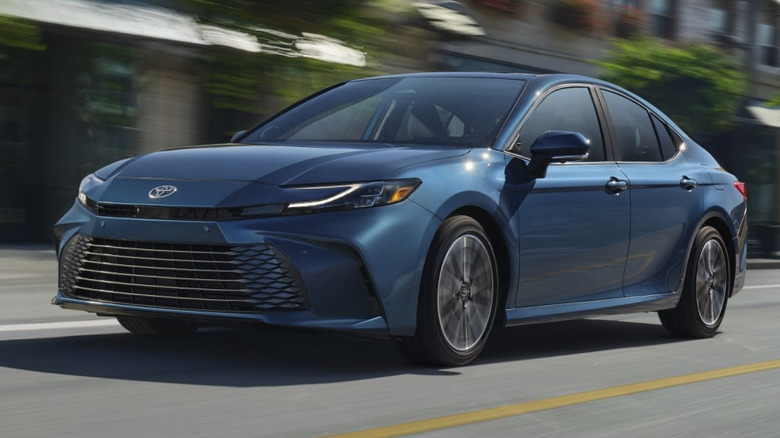
Even though the automotive industry keeps changing—especially over recent years as companies rush to transition to electric vehicles—Toyota continues to be a favored choice among consumers. The company boasts an excellent track record for safety, dependability, and reasonable prices, not only during the initial sale but also concerning upkeep expenses. While certain Toyota models may prove more cost-effective regarding service fees compared to others, purchasing a Toyota generally remains a secure decision overall.
We have utilized information from a car comparison website. CarEdge To create a roster of Toyota’s best models based on minimal maintenance expenses, where all these cars are forecasted to incur lower upkeep costs throughout a decade compared to typical vehicles within their respective categories. Additionally, many of these models come with affordable price tags when bought new, offering several options priced at $30,000 or under.
Read more: All Ford Mustang Generations Ordered From Least Favorite to Most Favorite
Toyota Corolla
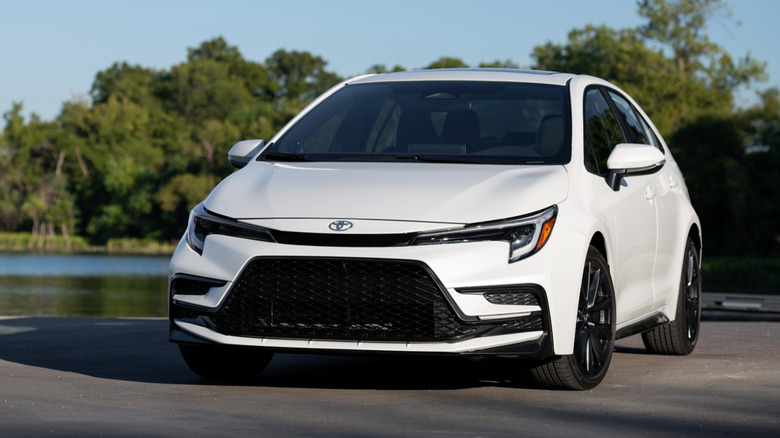
In 2021, Toyota revealed that they had produced the 50 millionth instance of the Corolla, cementing its position as both the top-selling Toyota model in history and one of the most popular vehicles globally.
Over the years, the vehicle’s widespread appeal can be attributed to ongoing efforts from the manufacturer aimed at keeping each subsequent model dependable, functional, and economical to operate. This trend continues today; according to CarEdge statistics, owning a new Corolla would incur approximately $4,444 in upkeep expenses throughout ten years. Notably, this expense is considerably lower compared to the typical costs associated with sedans within the same timeframe.
In addition to having low running costs, the Corolla is also affordable to purchase, with prices starting at $22,325 before fees for 2025 models. Available in both hybrid and conventional versions, we tested the latest iteration of this vehicle. Corolla Hybrid In 2023, we put it through its paces and were quite pleased with what we found. The vehicle’s extensive features and impressive fuel economy make it a good deal considering the cost. Similar to earlier versions, the newest Corolla doesn’t offer an engaging driving experience or stand out as strikingly stylish within its class; however, customers seeking such attributes might discover comparable budget-friendly options among other vehicles in Toyota’s range.
Toyota Sienna
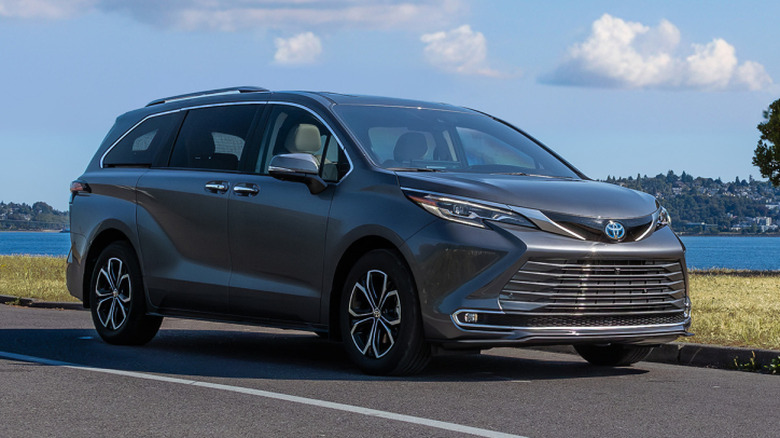
The The Toyota Sienna will see minimal updates for the 2025 model year. For instance, they include built-in support for wireless Android Auto and Apple CarPlay along with a wireless charging station to keep smaller gadgets like smartphones powered during travel. Despite these enhancements, the Sienna remains affordably priced, with an MSRP beginning at approximately $40,000 for the year 2025 model.
Six different trims are offered, ranging from the budget-friendly LE trim to the high-end Platinum trim. The more luxurious Platinum version begins at $56,145 before additional charges.
Regardless of the specific trim level chosen, the Sienna continues to be a strong contender in terms of operating expenses. Data from CarEdge indicates that owners can anticipate spending around $6,454 on maintenance and repairs throughout the vehicle’s initial ten years—a figure that is approximately $2,771 below the typical cost for minivans within this category. Additionally, according to these statistics, Siennas have a notably lower probability of needing extensive repair work compared to competing models over the same timeframe.
Toyota Prius
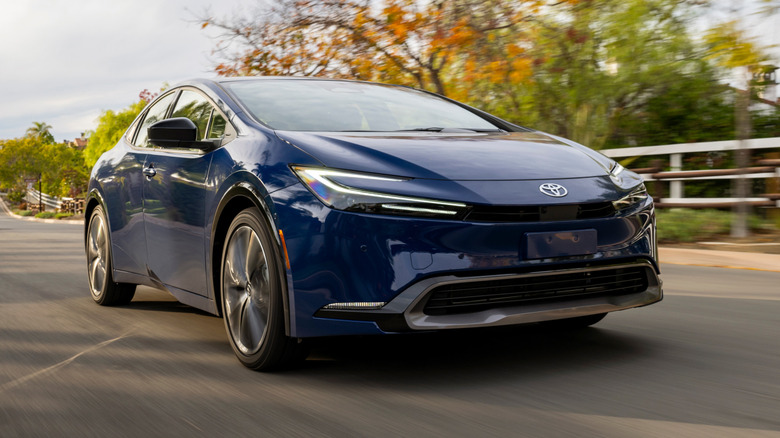
Before the release of the newest model, it’s reasonable to say that people weren’t purchasing a Prius due to its appearance. Actually, many likely chose to buy one despite its design. Fortunately for fans, Toyota opted to completely revamp the look of their renowned hybrid vehicle, resulting in the present-generation Prius. Toyota Prius It appears much more stylish than what potential purchasers might anticipate. Priced at around $30,000 for the year 2025 model, this vehicle offers a wide array of trim levels to select from, similar to other well-liked Toyota vehicles.
All-wheel drive can be selected for every variant, even the entry-level LE trim, and it increases the price by under $2,000. Additionally, the Prius promises to maintain affordability throughout its ownership lifecycle. has the best fuel economy ratings Of any hybrid available on the market, excluding plug-in hybrids.
When discussing plug-in hybrid vehicles, Toyota also provides a PHEV variant of the Prius. Previously, this model was known as the Prius Prime However, it has since been renamed as the Prius Plug-In Hybrid. Additionally, the Prius is relatively inexpensive when it comes to maintenance and repairs, with CarEdge projecting that it will likely cost $4,380 for upkeep over ten years, approximately $500 less than the typical hatchback.
Toyota Camry
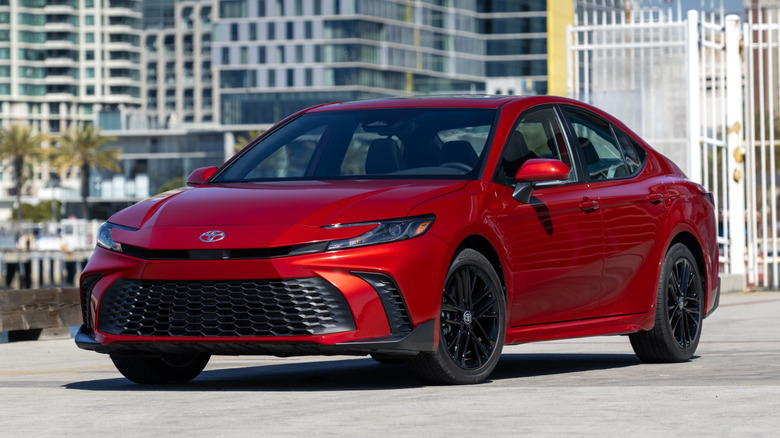
One of Toyota’s most recognized models, the Camry remains a practical and budget-friendly choice for those seeking dependable transport. For 2025, it offers an improved driving experience and enhanced efficiency due to its new standard hybrid system. 2025 Toyota Camry's The cabin received an update, featuring Toyota's newest entertainment technology and additional driving aid systems.
Both front-wheel-drive and all-wheel-drive versions are provided; however, the Camry’s trim levels are more streamlined than those found on other Toyota vehicles. There are four trims to choose from, with the most affordable option being the LE, which starts at slightly less than $30,000.
We believed that the LE trim’s accessory list was not as comprehensive for its cost compared to other configurations within the lineup, with the SE, XLE, and top-tier XSE trims providing substantially more features at just a slight increase in price. Consistent with the Camry's image as a practical everyday vehicle, its upkeep expenses are lower than those of numerous competitors, with CarEdge estimating that owners will likely incur approximately $4,597 in total expenditures throughout a ten-year span.
Toyota RAV4
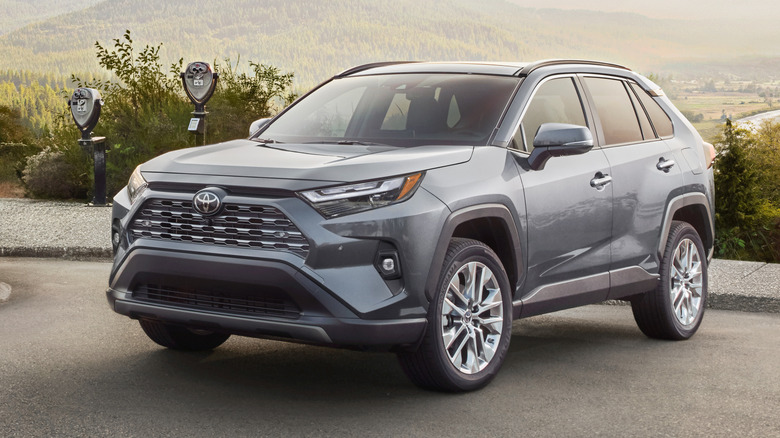
The RAV4 holds significant importance for Toyota, as evidenced by sales figures showing more than 475,000 units sold in 2024 based on data from CarFigures. This popular SUV comes equipped either with or without a hybrid system. The non-hybrid version utilizes the same 2.5-liter four-cylinder gas-electric setup featured across several contemporary Toyota vehicles.
The 2025 RAV4 Hybrid It stands as the go-to option for purchasers seeking top efficiency, and it comes at an accessible price point, beginning at $32,300 before fees. The non-hybrid version is a bit less expensive, with base pricing starting at $29,250 prior to fees.
People aren’t drawn to the RAV4 en masse due to its captivating driving experience or spirited performance – it lacks both. However, what it delivers is ample interior space, dependable operation, and affordable ongoing expenses. According to CarEdge estimates, maintaining one over ten years would likely set you back around $6,007 in upkeep and repair costs. This figure is above that of certain other comparable Toyota models but remains significantly lower compared to the typical expense for SUVs across the board.
Toyota bZ4X
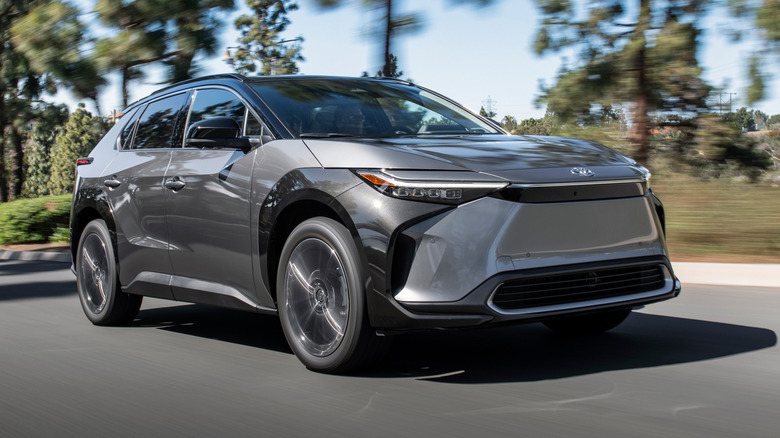
At present, the bZ4X is still the sole fully electric vehicle in Toyota's offerings within the United States. operated the latest model of the car upon its release And discovered that it maintained the usual Toyota characteristics, providing easy-to-use driving with ample technology included. Nonetheless, it wasn’t an obvious choice for an electric vehicle since we were not entirely convinced by its interior layout, feeling it lacked the sleekness compared to competing models. Additionally, its battery life fell short when measured against top-tier alternatives.
During our test drive, the bZ4X proved to be significantly pricier than other Toyota vehicles, with even the entry-level version priced above $40,000. However, in the past two years, the company has lowered the starting price somewhat; currently, it stands at $37,070 before additional charges. Despite this reduction, it remains far from being a deal, as competing models provide greater range and functionality for around the same cost.
Still, pure capability only forms part of the equation when considering a Toyota. The other part of the equation involves the car's long-term running costs, and that's where the bZ4X is still ahead of its rivals. CarEdge predicts that buyers should expect to shell out $3,496 in maintenance and repair costs over 10 years, which is far less than the average new SUV. The Toyota also has a notably lower chance of requiring major repairs over that period compared to the segment average.
Toyota Corolla Cross
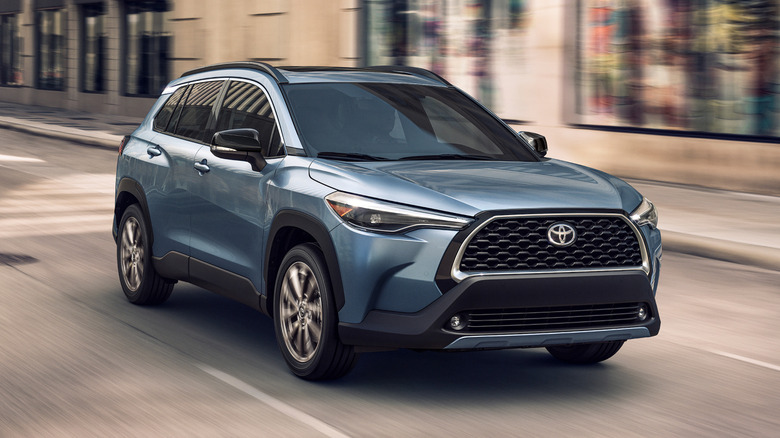
Toyota's extensive range of vehicles leads to some degree of overlap among several of its models, as expected. Corolla Cross Hybrid faces a minor drawback due to this. Those primarily seeking the most cost-effective new Toyota might find more value in choosing the Corolla Hybrid, which has a lower initial price tag. For those aiming for top-tier performance from Toyota’s leading hybrid technology, a Prius would also be worth considering. The Corolla Cross was created mainly to cater to buyers interested in budget-friendly SUVs and crossover vehicles; thus, it successfully meets this objective.
This vehicle provides numerous features that SUV shoppers typically seek after — such as an elevated seating position, standard all-wheel drive, and ample standard safety and convenience technology. Similar to other Toyota vehicles, this model stands out due to its efficiency and low maintenance costs; according to CarEdge estimates, it’s projected to incur approximately $5,875 in maintenance and repair expenses over ten years. This amount exceeds what owners would pay for the Corolla and Camry during the same period. However, for those firmly committed to owning a compact SUV, this option remains more economical compared to most competitors within its class.
Toyota Crown
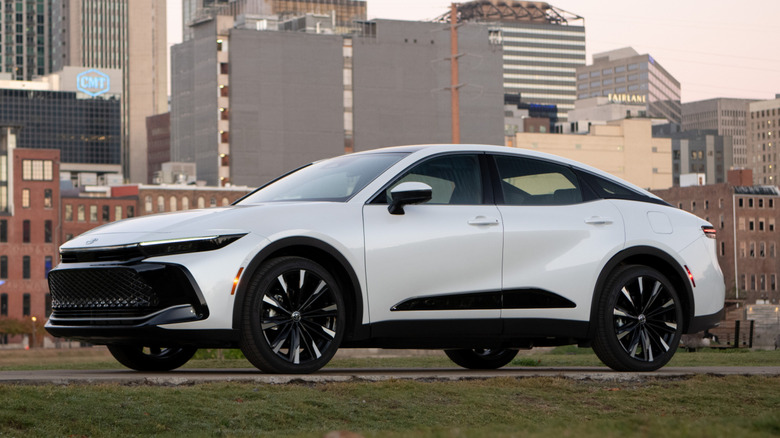
One of the more unconventional models in the brand's present lineup, the Toyota Crown melds crossover and sedan designs to craft a distinctive-looking vehicle that remains loaded with Toyota's trademark functionality. most recent version of an extensive series of Crown sedans , which boast decades of tradition in Japan but have seldom crossed over to the American market.
Beneath the distinctive exterior of the Crown lies a more conventional 2.5-liter four-cylinder hybrid powerplant, similar to what you'd find in several other well-received Toyota vehicles. For those seeking enhanced performance, an upgrade to the Hybrid MAX system is available; this setup features a 2.4-liter turbocharged four-cylinder engine producing 340 horsepower.
Despite being entry-level, the Crown doesn’t come off as inexpensive, beginning at $41,440 before additional charges. Conversely, those opting for the high-end Platinum model equipped with the Hybrid MAX engine and premium features can expect to pay a minimum of $54,990 prior to extra expenses. However, potential purchasers might find relief knowing that according to CarEdge data, anticipated upkeep and repair costs over ten years amount to only $4,932, marking an overall saving of $833 compared to typical sedans.
Toyota Highlander
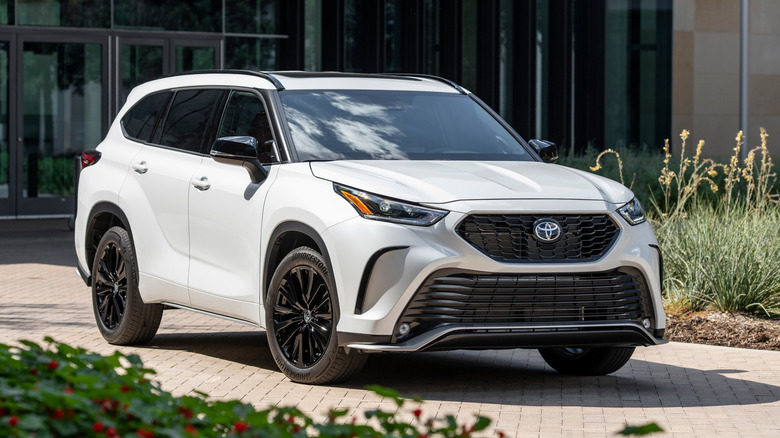
Although it doesn’t fall short of sales expectations, the Toyota Highlander Isn't as favored among U.S. consumers as it used to be. Data from CarFigures indicates that Toyota moved 89,658 units of the three-row SUV in 2024—impressive yet a decline from the 171,289 vehicles sold the previous year. These reduced numbers might partly reflect Toyota’s introduction of competing models like the Grand Highlander. This new model provides greater cabin room along with potentially more appealing design at just a slight additional cost.
This decline isn’t fully accounted for though, and Toyota surely will scrutinize its sales data to pinpoint precisely what competing vehicles attracted possible Highlander purchasers. Even though it’s not topping the charts anymore, the Highlander remains competitively priced at $40,000 as a starting MSRP for the entry-level model in 2025. The lineup includes both conventional and hybrid options, culminating in the high-end $53,975 Highlander Hybrid Platinum version.
According to predictions made by Data from CarEdge, the Highlander is also expected to have low running costs, with anticipated expenses of around $6,291 for maintenance and repairs over a decade.
Toyota 4Runner
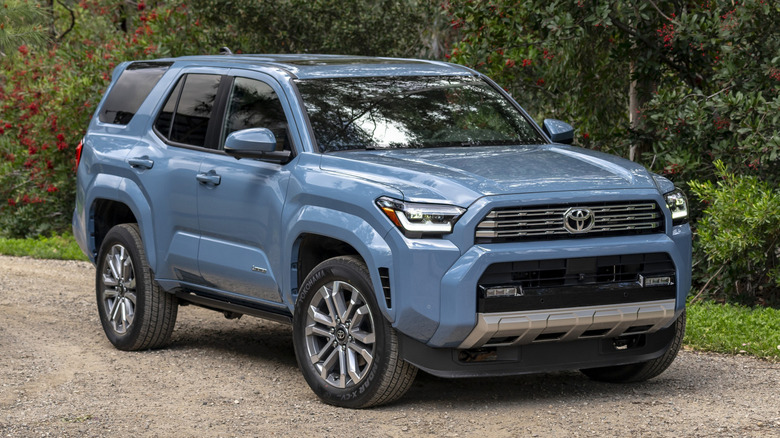
The prior version of the 4Runner had started to seem outdated compared to contemporary SUVs, featuring a traditional design both internally and externally, and progressively lagging behind newer competitors in terms of value and sophistication. Following the 2024 model year, Toyota concluded it was necessary to introduce an entirely new generation to supersede it, after putting this latest iteration through testing. 2025 Toyota 4Runner Once off-roading, we can verify that it remains just as capable as previously.
Fortunately, it has been substantially updated internally compared to previous models and now offers a hybrid option capable of delivering up to 326 horsepower and 465 lb-ft of torque. While it’s too soon to definitively determine how dependable the newest 4Runner will prove to be relative to past versions, CarEdge predicts that maintaining low operating expenses remains quite probable.
A projected expenditure of approximately $6,492 on upkeep and repairs over ten years is considerably lower compared to the typical cost for an SUV, and the 4Runner is expected to require fewer significant repairs as well. The starting price for the 2025 model, not including additional charges, is around $40,770. The most affordable hybrid version, known as the TRD Off-Road i-FORCE MAX, can be found beginning at $51,990 before adding any extra costs.
Toyota Mirai
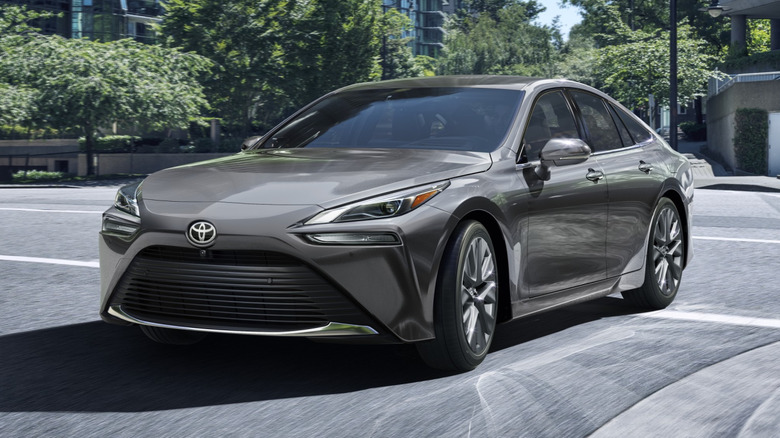
Hydrogen-powered cars remain constrained in practical application due to insufficient refueling stations; however, some companies provide them in specific regions. Among these firms is Toyota, which markets its Mirai sedan at an initial price of $50,190 before additional charges. This model can be purchased exclusively through particular Toyota outlets located within California.
On the surface, the present generation appears at first sight as an ordinary sedan, which was intentional. Toyota might have gone overboard in making the preceding version. Toyota Mirai appear distinct, yet the final design appeared clumsy and disjointed from particular viewpoints. In contrast, the present-day Mirai presents a sleeker appearance and wouldn’t seem as out of place among a lineup of Camrys and Corollas in a parking lot. Additionally, it boasts comparable upkeep expenses to these top-selling vehicles, with an anticipated $3,222 overall expense for maintenance and repairs over ten years, based on data from CarEdge.
Nevertheless, due to the limited availability of hydrogen refueling stations, the Mirai will likely stay a specialized choice for some time. Despite this, it appears that Toyota is committed to making sure their hydrogen vehicle is just as attractive to consumers as their gasoline models — even though it might still be somewhat of an unusual option.
Toyota Grand Highlander
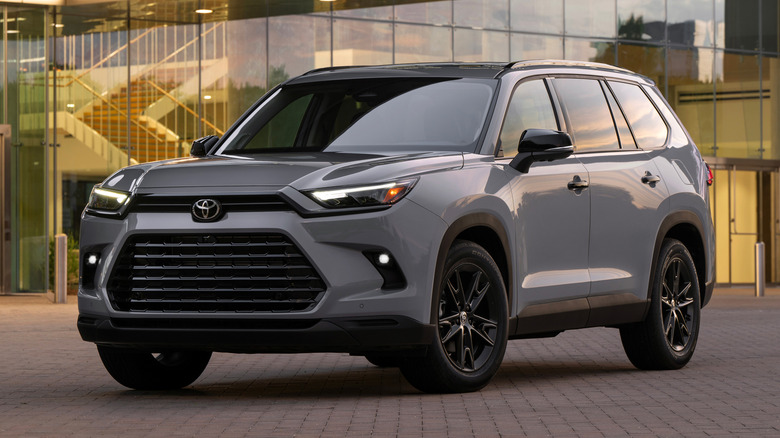
Launched for the 2024 model year, the Toyota Grand Highlander provides the spacious interior reminiscent of a minivan yet comes with the style and functionality of an SUV. This model boasts numerous features and can be selected with various engine options, topped off by the highest output 2.4L four-cylinder Hybrid MAX powerplant which delivers a total of 362 horsepower. At the lower end of the lineup, the basic non-hybrid LE variant manages a commendable 265 horsepower.
The maintenance expenses for this model are somewhat higher than those of other Toyota vehicles, yet remain low relative to similar-sized SUVs. According to CarEdge, the estimated upkeep totals around $6,351 over ten years. Given that the Grand Highlander can accommodate up to eight people along with ample storage space, these figures present a strong value proposition. This price point aligns closely with the Sienna minivan’s costs, offering comparable spacious interiors—a feature appealing even to potential buyers hesitant about the Grand Highlander's design.
Toyota Crown Signia
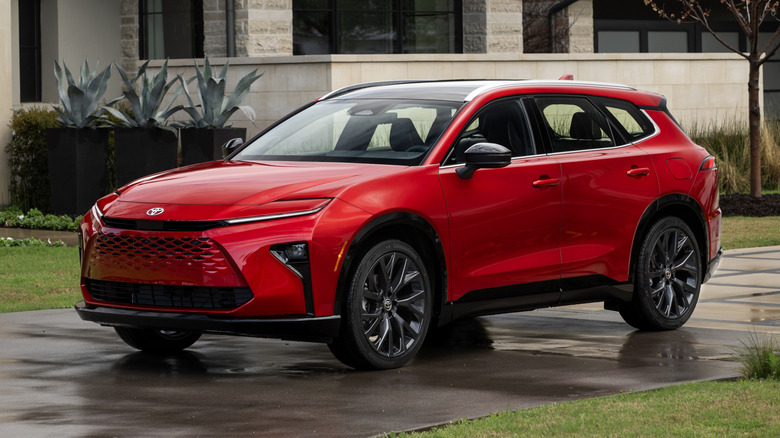
Next to the Crown sedan, the 2025 Crown Signia The SUV is a fairly recent inclusion in Toyota’s range of vehicles. It serves as a replacement for the Venza, which ceased production following the 2024 model year, providing comparable design and luxurious interiors at its highest level of trim. While the cabin isn’t quite up to par with those found in Lexus’ SUVs, it comes as close as possible within Toyota dealerships; customers would have to visit a Lexus dealer to find something more akin to this high-end experience.
Only two trims are offered for 2025 -- the XLE and Limited -- which start from $43,790 and $48,190, respectively. Even with all the options ticked, a fully-loaded Crown Signia clocks in around $53,000.
Despite its luxurious feel, the Crown Signia’s maintenance expenses will likely be lower compared to many other high-end vehicles. As stated by CarEdge, these upkeep and repair costs over ten years would amount to approximately $6,217, which is nearly $2,000 below the typical expense for an SUV. Additionally, this figure is slightly under what you’d expect from well-regardedToyota models such as the Grand Highlander and Sienna designed with families in mind. However, one key difference between them is that the Crown Signia does not include a third-row seating option.
Toyota GR86
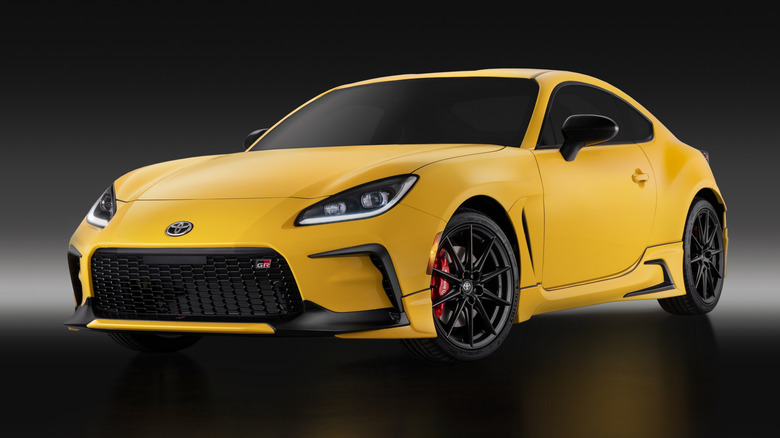
Despite offering sporty vehicles, Toyota continues to stand out for its lower operating expenses compared to competitors. According to CarEdge predictions, the GR86 will have an estimated maintenance cost of $4,822 over ten years, which is significantly below the typical expense for a new coupe model. The car is also budget-friendly at purchase; entry-level models begin around $30,000 before additional charges apply. Additionally, for those looking ahead to 2025, a limited edition GR86 Hakone version can be obtained for $35,270.
We sampled the 2024 Toyota GR86 And I discovered it remains equally delightful to handle, thanks to features like its manual gearbox, rear-wheel-drive configuration, and light weight design, which make it quite uncommon these days. While a Miata provides comparable excitement, the GR86’s solid roof along with the enhanced performance of the newest version might position it as slightly better suited for everyday use. Additionally, it officially boasts four seating positions, although realistically speaking, those back seats offer very limited utility.
Looking for the newest tech and car advancements? Sign up for our complimentary email newsletter. For the most recent news stories, detailed guidebooks, and practical advice, delivered once per email.
Read the original article on solusikaki.com .
